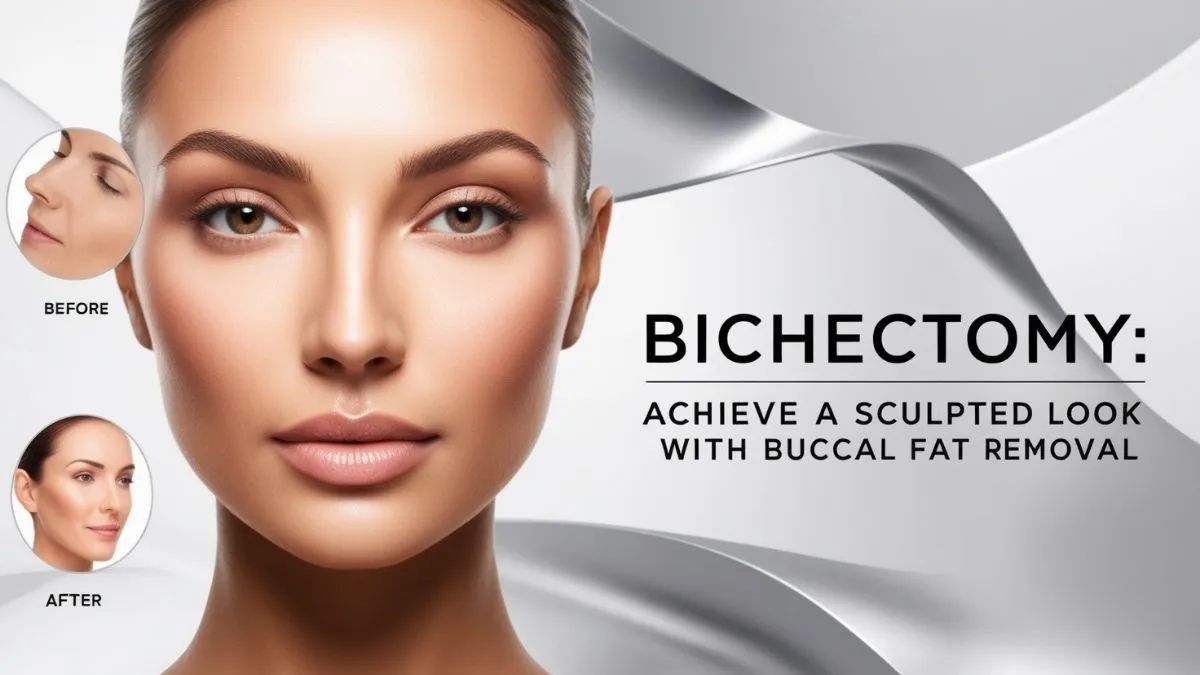GENERAL
Bichectomy: Achieve a Sculpted Look with Buccal Fat Removal

Bichectomy is a surgery, which focuses on facial aesthetics improvement by removing the pads of fat situated in the cheeks. These fat pads contribute to a rounder, fuller facial shape and common mesa known as ‘baby cheeks’. Bichectomy which is also known as buccal fat reduction is one of the current revered surgical procedures among those who wish to have a refined facial enhancement. This is a minimally invasive procedure that seeks to remove some fat deposits in the cheeks known as the buccal fat pads to give patients a more slender look concentrating more on aspects like the cheek bones and jaw. Also known as cheek reduction surgery, it has been hailed by celebrities and influencers for its effectiveness and low down time.
History and Popularity of Bichectomy
The idea of facial contouring with surgery has been around for years, with bichectomy only recently becoming popular. Originally it was a specialized process in the branch of cosmetology and rapidly became popular among skinny models, actors, and bloggers who wanted to look perfect on camera. That popularity was further contributed to by social media, as individuals started posting pictures showing their ‘before and after’ transformation. Currently, it is a popular option among storm clinics, and ladies and gentlemen of different ages and with different occupations come to beauty clinics to perform the operation.
Benefits of Bichectomy
- Enhanced Facial Definition: Reduces cheek fullness, creating a slimmer, more angular appearance that highlights natural features like the cheekbones and jawline.
- Permanent Results: Once the buccal fat pads are removed, they do not regenerate, ensuring a long-lasting transformation without the need for maintenance.
- Minimal Scarring: The procedure involves incisions inside the mouth, leaving no visible external scars and ensuring a discreet recovery process.
- Boost in Confidence: Many patients report feeling more attractive and self-assured due to the improved symmetry and contour of their faces.
- Quick Recovery Time: Bichectomy is a minimally invasive procedure with a relatively short recovery period, allowing most individuals to resume normal activities within a few days.
Anatomy of Buccal Fat Pads
Calf lipomas are common type of lipomas that develop as naturally occurring fat deposits in between facial muscles of the lower cheek region. These pads afford protection and the ease of gliding ones face in the execution of the stunt. However, their size and position change from one person to another depending on their genetic uptake, weight, and general body mass indexes. In terms of functionality, buccal fat still has some role even though its high removal does not affect facial function. Instead, the smaller flip provides definition to the face by defining otherwise hidden bones such as the cheekbones, the jaws, and the like.
Ideal Candidate for Bichectomy
Bichectomy is most suitable for those with round or chubby cheeks for whom cheek angles matter greatly. We want ideal patients here, or at least as ideal as can be, that is, patients who are in excellent health and those with the right expectations from the surgery. In this regards, it is not for everyone that requires it, as it has its own set of limitations. Individuals with a less round face will not experience uplift as planing off the excess fat will in time the tend to develop thin looking faces similar to emaciated patients especially when they are older. Also, people with particular diseases or low skin flexibility should consult a surgeon to decide on the possibility of performing it.
The Surgical Procedure
The process of bichectomy is not very lengthy and it usually does take up to 30 to 60 minutes. Carried out on outpatient basis, the program starts with a process of administration of local or general anesthesia if necessary. The surgeon then incises behind the molars within the mouth to get close to the buccal fat pads. These fat pads are then again excisedolicerously while ensuring that nerves or neighboring tissues are not compromised. If the required amount of fatty tissue has been reduced, the site is stitched using dissolvable sutures. People can return to their homes soon after the operations because the procedure does not take long to be done.
Recovery and Aftercare
In most respects, postoperative bichectomy recovery is uneventful and defined by noticeable lack of discomfort. Original: Most patients develop normally conclusive erythema and swelling during the first three days after the intervention; discomfort is treatable with antibiotics and cold compresses. Clear fluids and bland diets should be consumed in the first days of the recovery in order not to aggravate incisions. Local infection may be contracted because the incisions are made inside the mouth, and, thus, proper oral hygiene is essential. General admonition given to the patients is to refrain from engaging in any strenuous activity for one week. Healing is normally complete in several weeks, and results are largely apparent once swelling decreases and the tissues remodel.

Risks and Complications in Bichectomy
Though bichectomy is approved and secure, it is not free from risk factors as it involves surgery. These are infection, asymmetry, removal of excessive fat or temporary lack of feeling in the cheek area. There are minimal side effects and they rarely include facial nerve injury or persistence of swelling. However these risks can be minimized by choosing a qualified and experienced surgeon. A patient also needs to adhere to directions availed to them after surgery, to reduce the risk of the complications. Again, the possible risks must also be explained to the patient when consulting with the surgeon for this to be avoided.
Comparison with Non-Surgical Alternatives
- Permanent vs. Temporary Results: Bichectomy offers permanent results by removing buccal fat pads, while non-surgical alternatives like dermal fillers and Botox provide temporary improvements that require repeat treatments.
- Invasiveness: Bichectomy is a surgical procedure with a recovery period, whereas non-surgical options are less invasive, often requiring no downtime or recovery time.
- Customization: It provides a more defined and permanent change in facial structure, while non-surgical treatments offer flexibility for adjusting results over time.
- Cost: Non-surgical alternatives tend to be less expensive upfront but may add up over time due to the need for maintenance sessions, while bichectomy involves a one-time cost.
- Results Visibility: The results of it are immediate and permanent, while non-surgical options may take longer to show results and may fade as the body metabolizes the substances over time.
Costs and Affordability
The cost of a bichectomy also depends on the experience of the surgeon rendering the service, the geographical location of the practice, and the quantity of work to be done. In general, the price ranges from $ 2,000 to $ 5,000. What we must know is that, since bichectomy is a cosmetic procedure therefore patients don’t get to have it covered by insurance providers. Some of the clinics provide working to enable the patient to cater for the cost of the surgery in a flexible way. Patients and clients need to ask about costs concerning those in relation to the anesthesia, the fees for the facility, and further appointments after the procedure. It is wise to spend your money in a qualified surgeon, because to be safe is to end up being satisfied with the final result.
Conclusion
Bichectomy is today accepted as a cutting-edge form of surgery that lies at the heart of contemporary aesthetic facial surgery. It has helped many patients minimize the fullness in the cheeks while also enhancing the visibility of underlying bone leading to a long term slim face. But, as with any cosmetic surgery, the measure of success depends on dedication, patience, and planning, not to mention selection of a right surgeon. People who want to go for it, either for personal reasons or to emulate other famous beauties, should look at the health risks and benefits involved in the procedure. When done correctly and with attention paid to pre and post-op instructions, this procedure can result in enhancement of a man’s self-esteem.
-

 BIOGRAPHY7 months ago
BIOGRAPHY7 months agoBehind the Scenes with Sandra Orlow: An Exclusive Interview
-

 HOME1 year ago
HOME1 year agoDiscovering Insights: A Deep Dive into the //vital-mag.net blog
-

 HOME1 year ago
HOME1 year agoSifangds in Action: Real-Life Applications and Success Stories
-

 BIOGRAPHY1 year ago
BIOGRAPHY1 year agoThe Woman Behind the Comedian: Meet Andrew Santino Wife




























